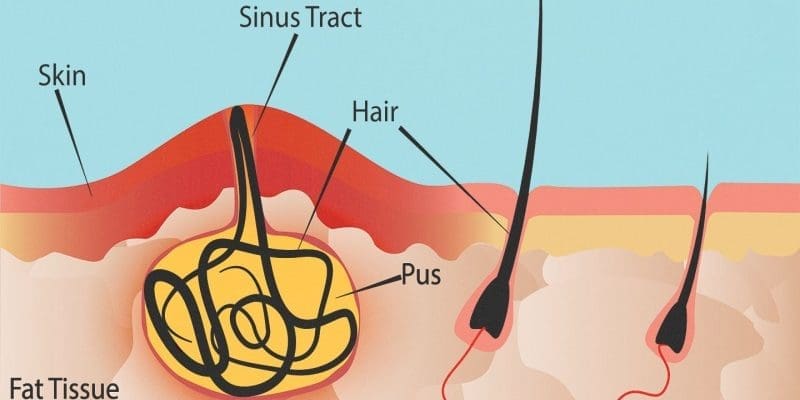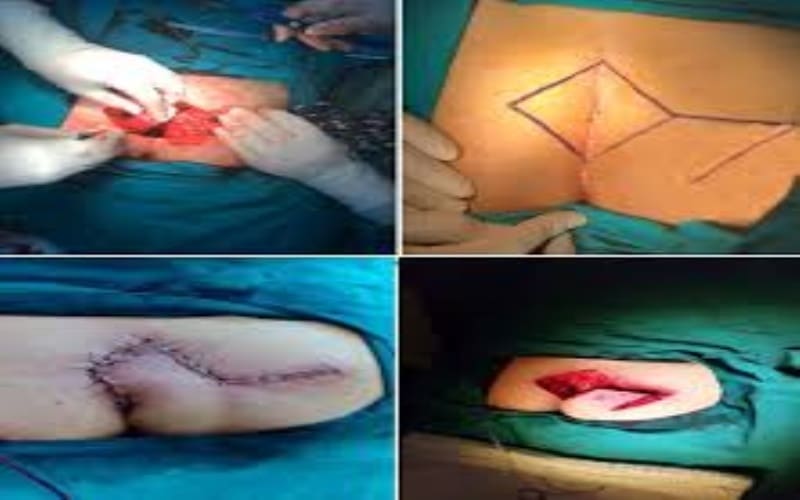
How to Prevent Pilonidal Sinus? – Different Treatment Methods
Overview
Imagine this: you’re going about your day when a tiny bump starts causing discomfort near your tailbone. It may seem harmless at first, but little do you know, it could be a notorious troublemaker known as a pilonidal sinus. Despite their small size, pilonidal sinuses have the uncanny ability to bring even the toughest individuals to their knees.
But fear not! With the right treatment and pilonidal sinus surgery, you can take control of this uncomfortable situation and bid farewell to the reign of the pilonidal sinus once and for all. Get ready to unravel the secrets and discover effective strategies for preventing and treating pilonidal sinus. Continue reading the blog to know more.
What is Pilonidal Sinus?
A pilonidal sinus, also called a pilonidal cyst, is a small tunnel or cavity in the skin near the tailbone (coccyx). It usually occurs in the cleft between the buttocks, just above the crease. Pilonidal sinus is commonly caused by the penetration of loose hairs into the skin, which can trigger an inflammatory response and lead to the formation of a cyst.
Pilonidal sinuses can be asymptomatic initially, but as they progress, they may become painful, swollen, and filled with pus or blood. Sometimes, they may develop multiple openings or tracts under the skin, making them more complicated to treat. The condition primarily affects young adults, especially males, and those who have a sedentary lifestyle or spend extended periods sitting.
Symptoms of Pilonidal Sinus
Not all pilonidal sinuses cause symptoms, and some individuals may be unaware of their presence until complications arise. A small, dimple-like depression on the skin’s surface may be the only noticeable symptom at first. However, once infected, it can quickly form a cyst or an abscess. The signs of infection include:
- Swelling and redness between the buttocks
- Pain which gets worse when sitting or standing
- Foul-smelling discharge of pus or blood from the abscess
- Hair protruding from the opening or sinus tracts
- Formation of multiple holes or sinus tracts in the skin
- Nausea, fever, and fatigue
Preventing Pilonidal Sinus
While it may be difficult to prevent pilonidal sinus entirely, there are several measures you can take to reduce the risk of its development or recurrence. Here are some preventive measures for pilonidal sinus:
- Good Hygiene: Maintain proper hygiene in the buttock area. Clean the area thoroughly during bathing, and wash and rinse the crease between the buttocks. Use a mild soap and pat the area dry gently afterwards.
- Hair Removal: Keep the area free of excess hair or minimise hair growth in the region. Regularly shave or trim the hair in the buttock cleft to reduce the chances of hair penetrating the skin and causing irritation.
- Avoid Prolonged Sitting: Avoid prolonged sitting or pressure on the buttock area. Take breaks during extended periods of sitting and engage in activities that promote movement and relieve pressure from the tailbone region.
- Cushioned Seating: If you need to sit for long, consider using cushions or specialised seating pads that support and reduce pressure on the tailbone and buttock area.
- Loose-Fitting Clothes: Opt for loose-fitting clothing that allows air circulation and minimises friction in the buttock area. Avoid tight clothing that can trap moisture and contribute to skin irritation.
- Maintain a Healthy Weight: Obesity or excessive weight can contribute to the development of pilonidal sinus. You should maintain a healthy weight through regular exercise and a balanced diet.
Treatment of Pilonidal Sinus
If you are diagnosed with one or multiple pilonidal sinuses, your treatment plan will depend on what best fits your case. The treatment approach will depend on several factors, such as:
- The severity of the condition
- Presence of infection or abscess
- Size and complexity of the sinus tract
- Frequency of recurrence
- Previous pilonidal sinus
- Recovery speed
Non-Surgical Treatment Methods

Following are some of the non-surgical treatment methods for treating pilonidal sinus.
- Home Care and Conservative Measures: Home care can be effective in the early stages or for mild cases. This includes maintaining cleanliness and dryness in the affected area, regularly washing the area with mild soap, and applying warm compresses to help alleviate pain and promote drainage.
- Antibiotics: If the pilonidal sinus becomes infected or forms an abscess, antibiotics may be prescribed to treat the infection and inflammation and prevent it from spreading. However, they cannot heal the pilonidal sinus.
Surgical Treatment Methods
In cases of recurrent or chronic pilonidal sinus, pilonidal sinus surgery may be necessary. This outpatient procedure is done under general anaesthesia that makes you sleep throughout the surgery. Or, you may be given regional anaesthesia to numb you from the waist down. The various surgical methods to remove pilonidal sinus include:
- Incision and Drainage: A healthcare professional will make a tiny incision to drain the pus and alleviate symptoms for larger or painful abscesses. This procedure is typically performed under local anaesthesia.
- Pilonidal Flap Surgery: A flap surgery is performed when the pilonidal sinus is extensive or recurrent. The surgeon makes a diamond-shaped incision to remove your affected skin and underlying tissue. They make another cut in the skin to remove tissue from the buttock next to it. One side of this diamond-shaped flap is then stitched into its place.
- Endoscopic Ablation: Endoscopic ablation is a minimally invasive procedure performed under spinal or local anaesthesia. The surgeon uses an endoscope (a thin, flexible tube that has a camera attached to the tip) to get a clear view of the affected area. The procedure involves removing the hair and affected tissue and using high-power radiofrequency to seal the sinus.
- Pilonidal Sinus Laser Surgery: Some advanced techniques, such as pilonidal sinus laser surgery, may be utilised to remove the cyst and sinus tracts with minimal scarring and faster recovery times.
After the surgery, you will be monitored during the initial recovery period. Instructions regarding wound care, pain management, and activity restrictions are provided. Follow-up visits are scheduled to monitor the healing progress and address any concerns.
Takeaway
Pilonidal sinus is a bothersome condition that can disrupt daily life and cause discomfort. From its hidden origins to its potential for recurring episodes, tackling this pesky enemy requires knowledge, proactive measures, and timely interventions. By practising good hygiene, adopting preventive strategies, and seeking appropriate medical care, you can pave the way for a pilonidal sinus-free existence.
References:
- https://my.clevelandclinic.org/health/diseases/15400-pilonidal-disease#symptoms-and-causes
- https://www.nhs.uk/conditions/pilonidal-sinus/
- https://www.healthline.com/health/pilonidal-cyst
- https://medlineplus.gov/ency/article/007591.htm
- https://www.uhs.nhs.uk/Media/UHS-website-2019/Patientinformation/Surgery/Having-a-Limberg-flap-operation-patient-information.pdf
